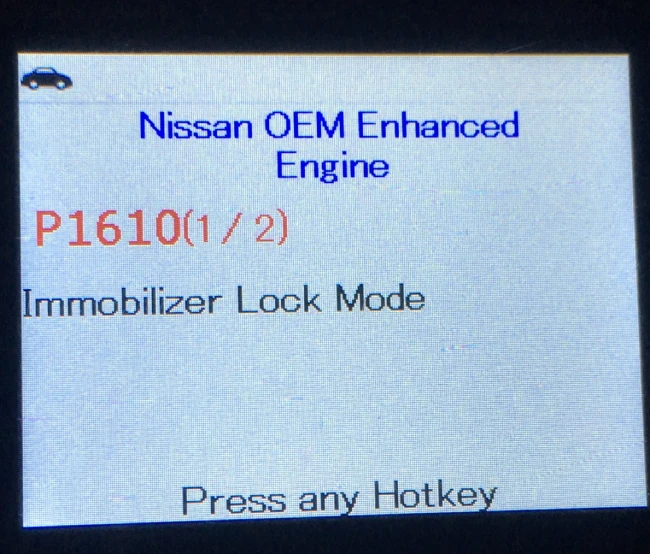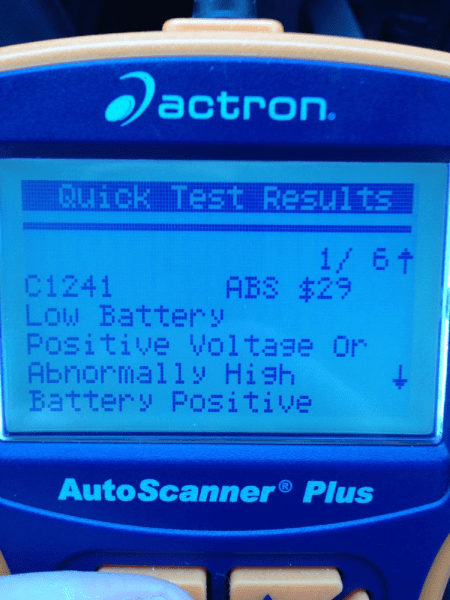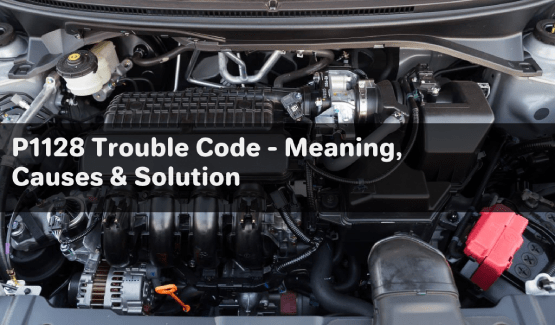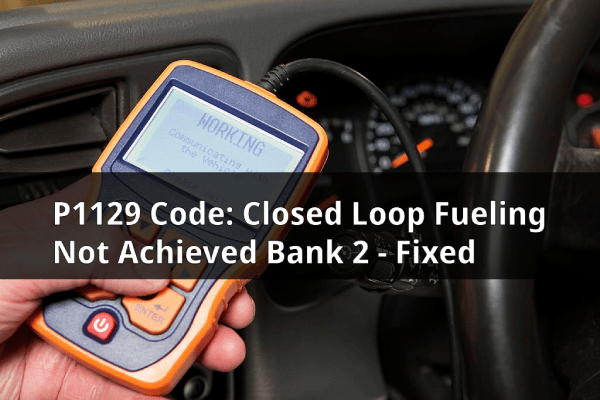If you own a Nissan, your engine may fail to start when you use the wrong or unprogrammed key. That triggers the error code P1610, which will also cause the check engine light to turn on.
Nissan cars and many other makes come with an anti-theft system called an immobilizer. It prevents the engine from being hotwired when there is a forced entry. The fuel injection sequence is only activated if the registered key is used.
So, what is the error code P1610, and what causes it? Read on for detailed information about it and your car’s immobilizer system.
What Does the Error Code P1610 Mean?
The error code P1610 is a manufacturer-specific code for Nissan, Mitsubishi, and other car makers. It is referred to as “Lock Mode.” This code becomes active when engine start is attempted 5 or more times using an unprogrammed or faulty key. But how does your car detect this?

Newer car models are equipped with an immobilizer, also known as a Nissan Anti-Theft System (NATS). This electronic circuit prevents the engine from running if the start attempt is made with the wrong key. It is a theft deterrent system that prevents the engine from being hotwired if someone gains unauthorized entry.
How Does NATS Work?
NATS consists of a programmed ignition key, antenna amplifier in the ignition key cylinder, body control module (BCM) or IMMU, engine control module (ECM), and security indicator lamp. These systems work to keep your car safe and theft-proof.
The NATS ignition key has a microcircuit inside it. When it gets within the range of the car, an electromagnetic field activates it, allowing the current to flow into the electronic circuit inside the key. That, in turn, causes the key to broadcast a secret binary code read by the ECM or BCM, depending on your car model.
ECM or BCM interprets the binary code broadcasted to determine whether the ignition key is valid. If it is the programmed one, the ECM or BCM starts the fuel-injection sequence to start the engine. Otherwise, the engine won’t run. And after 5 or more attempts, the car gets to the lock mode.
Causes of Nissan P1610 Error Code
The P1610 Nissan error code can become active due to different reasons. It can vary from one model to the next. But generally, the following are the most common causes:
Ignition Key Memory Loss
This is rare, but it can still happen. A NATS ignition key can lose its memory over time. That means it won’t broadcast the correct binary code used by the ECM or BCM for identification. When that happens, the key will be treated as faulty and won’t start the engine. Instead, the P1610 Nissan code becomes active if you attempt to start your car with it more than 5 consecutive times.
Your ignition key needs reprogramming if this happens. Call an experienced locksmith or contact the dealer to send a technician to reprogram it. You may need to replace the key if reprogramming is impossible.
Sometimes it can be a dead key fob battery. If that is the case, the microcircuit in the key won’t be activated as it should, meaning it won’t broadcast the binary code. Replacing your key fob battery can help resolve that problem. Try it even before contacting the dealership for help.
Aftermarket Alarm Installed
An aftermarket alarm can draw your battery power and run it flat over time. If you have a weak battery, it can run out when an alarm is constantly on. Also, some aftermarket alarms have a starter or ignition disable circuit that prevents the engine from starting. These situations may make the BCM or ECM think that the NATS ignition key has failed or the wrong one is being used. As a result, the error code P1610 becomes active.
Faulty IMMU
An immobilizer control unit is the brain of your car’s anti-theft system. When it is faulty, the entire functionality becomes compromised. The code P1610 becomes active, and your check engine light may turn on.
Signs of a faulty IMMU include unlocking and locking problems, the engine does not start, the key in the ignition hole does not turn, and the car alarm failure. If you experience this problem when locking or unlocking doors remotely, the IMMU may be the culprit. But first, ensure your key fob battery is not weak or dead before diagnosing the problem further.
Faulty Engine Control Module (ECM)
The immobilizer allows the engine control module to initiate the fuel-injection sequence, which starts the engine. Unfortunately, ECM chips or electronic components can become faulty with time. It may also function abnormally.
A faulty ECM means your NATS will not function as intended, triggering the P1610 code. The ECU can be repaired or replaced. But before that, check the wire harness to see if it is damaged or corroded.
Possible Symptoms of P1610 Nissan Error Code
The signs and symptoms when you have an active P1610 error code are evident and unique. You will notice the following:
Check Engine Light
The check engine light illuminates the dashboard if you have an active P1610 code. Using an OBD2 diagnostic tool that can read manufacturer-specific will reveal P1610.
Engine Fails to Start
The immobilizer or NATS in Nissan cars is the system that initiates the fuel injection to start the engine. If the error code is active, the system is experiencing a problem and will not function normally. So, the engine won’t start, no matter how you try, until the issue is resolved.
Unlocking and Locking Problems
The NATS also control the locking and unlocking of your car doors. It allows you to lock or unlock the doors remotely using your key fob. If this function no longer works, the problem can be the immobilizer system and a possible active P1610 error code.
Key Ignition Won’t Turn
If your Nissan model does not have a push button to start the engine, it will have an ignition key slot. Once you insert the key, the key fob at the base sends a binary code to the immobilizer to allow you to start the car. If the ignition doesn’t turn, the problem may be a damaged transponder chip inside the key fob or other parts of the immobilizer system.
What Should You Do If You Get This Code?
The P1610 error code is frustrating. It renders your car immobile and just a piece of junk metal. That means you need immediate help to resolve it if you want to use your vehicle.
Contact a dealership or any other qualified technician to help you reprogram or replace your key. Sometimes you need a mechanic to determine the exact cause and fix it. A NATS ignition key may not be the culprit. This problem can also be caused by a faulty ECU, IMMU, or an aftermarket alarm system installed in your car.
Average Cost of Fixing the P1610 Error Code?
How much does it cause to diagnose and fix error code P1610? Well, it depends on many factors, including car make and model. The diagnosis often takes one hour of labor. And depending on your location, the charges can range from $75 to $150 an hour.
After diagnosis, the solution. Will you need to reprogram the key or replace it? Is your IMMU or ECU faulty? The cost of fixing it will depend on the part to be repaired or replaced.
Several factors determine the cost of reprogramming your key fob. Generally, it will vary from $50 to $250. And the cost of replacing your key fob will typically range from $100 to $850.
The ECU inspection and testing cost about $150-$300 at a local auto repair shop. If it can be reprogrammed or repaired, you again pay an additional $300-$750 for the service, depending on the car’s make and model. But if it is damaged and you have to replace it, the part will cost anywhere from $400 to $1,400. On average, you can expect to spend between $500 and $2,000 to replace your ECU.
But if the immobilizer is the problem, the replacement cost is approximately $300, including labor and parts. But expect this to vary depending on the car’s make and model.
How To Fix P1610 Error Code?
As mentioned, the P1610 error code becomes active when the unregistered key is used. The car will lock if the action is attempted 5 times or more and the car gets into the lock mode. If you have the programmed key for your vehicle, you can escape the lock mode and start your car without problems. Use the following procedure to achieve it.
- Turn off the ignition switch
- Use the registered key to turn the ignition switch back on but do not start the engine.
- Wait for 5 seconds and return the key to an off position.
- Repeat the above steps twice (a total of 3 cycles) and start the engine.
- If your car is keyless, disconnect the battery for about 30 minutes and start the engine using a programmed or a known registered key. But if this problem persists, contact the dealer to help you program a new key or diagnose the problem and fix it.
Fixing the P1610 error code may involve reprogramming a new key or replacing the immobilizer or ECU, whichever is faulty. You should have your car back the same day you contact the dealer to solve the problem.
Brian is an auto technician who writes DIY repair articles and creates how-to videos for MechanicAsk. He focuses on common repairs like brakes, oil changes, and lighting. Brian draws on his 5 years of dealership experience to explain repairs in an easy-to-follow manner, even for novice do-it-yourselfers. His technical articles always include detailed tool lists, supply checklists, and visual guides.









